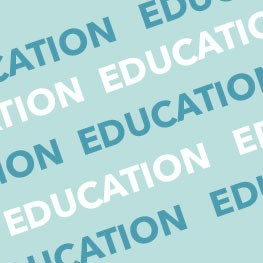
When I was expecting my first child 10 years ago, my mother offered this rather unusual advice maintain a happy disposition with a mind at ease and don't look at ugly pictures. This was all so that the new baby would be beautiful, intelligent and sweetly mannered.
Superstition? Perhaps - but she was right! As far back as the Ming Dynasty expectant mothers were encouraged to consider behaviors that would be favorable to child development. Today mothers expose their unborn children to Mozart and math! Burgeoning research in prenatal and postnatal brain development acknowledge at least some of these 'old wives tales', provide us with scientific evidence for what we, as parents, know innately.
The human brain comes prepared with more nerve connections than it may need. Over time some of these vital pathways get 'hard-wired' as a result of repeated use, and others that aren't used are trimmed away. Exposure to music for instance helps the brain to develop the areas of patterning and reasoning that are also very important in learning the processes of math and science.
As a child's primary teacher and role model, parents play an important role in establishing an enriched environment to support brain development and future academic success.
Recipes for creating this environment are agreed upon by most brain researchers to include the following:
1. Provide a steady source of emotional support love, nurturing, caring and warmth.
2. Provide a nutritious diet with enough protein helping to develop the branches of the brain's nerve cells. A healthy body will have the energy to become involved as an active participant rather than as a passive observer.
3. Stimulate the five senses (touch, taste, hearing, smell and sight) but not necessarily all at once! Stimulation, not over-stimulation is the goal.
4. Create an atmosphere free of undue pressure or stress, but with enough intensity to maintain interest and commitment to the task.
5. Present new challenges that are neither too easy nor too difficult for the child's stage of development.
6. The brain is social and works best when exposed to interaction with others through conversation, sharing of ideas and knowledge, and play.
7. Promote a broad range of skill development including mental, physical, aesthetic, social and emotional. Did you know that well-coordinated adults were children who did a lot of skipping, jumping and running?
8. Allow your child to choose activities that are particularly appealing to him/her.
9. Give your child a chance to assess the results of his/her work and modify it - without your input. Are there other ways to build the block tower or sandcastle?
10. 'What did you do in school today?' 'Nothing'. Sound familiar? Instead, try asking, 'Did you ask a good question today?' Asking good questions is a challenge and not limited to school, but will promote learning in all areas.
Here's one way to get the whole family involved in charging up those brainwaves.
The Bubble Challenge - Mix approximately eight tablespoons of dishwashing liquid in one litre of water. Pour into a shallow tray. - Gently blow through a straw as you move it across the surface of the water. Estimate the size of the bubbles you create. - Try to make a bubble that covers the whole surface of the tray. What did you try and what worked? - When you make a large bubble, touch it gently with a wet finger. What happens? - Now try touching a bubble with a dry finger. What happens? - What else can you use with your bubble solution to make bubbles of different sizes? - The Ultimate Challenge: Can you make a square bubble? Why or why not?
For more great activities and challenges visit wonderville.ca Remember that the best problem solvers are those who can laugh! Create an enjoyable atmosphere for learning and everyone benefits.
Hyacinth is the Past Director of Learning for the Science Alberta Foundation. Past Calgary's Child articles can be found at sciencealberta.org under Science Programs.Calgary’s Child Magazine © 2024 Calgary’s Child